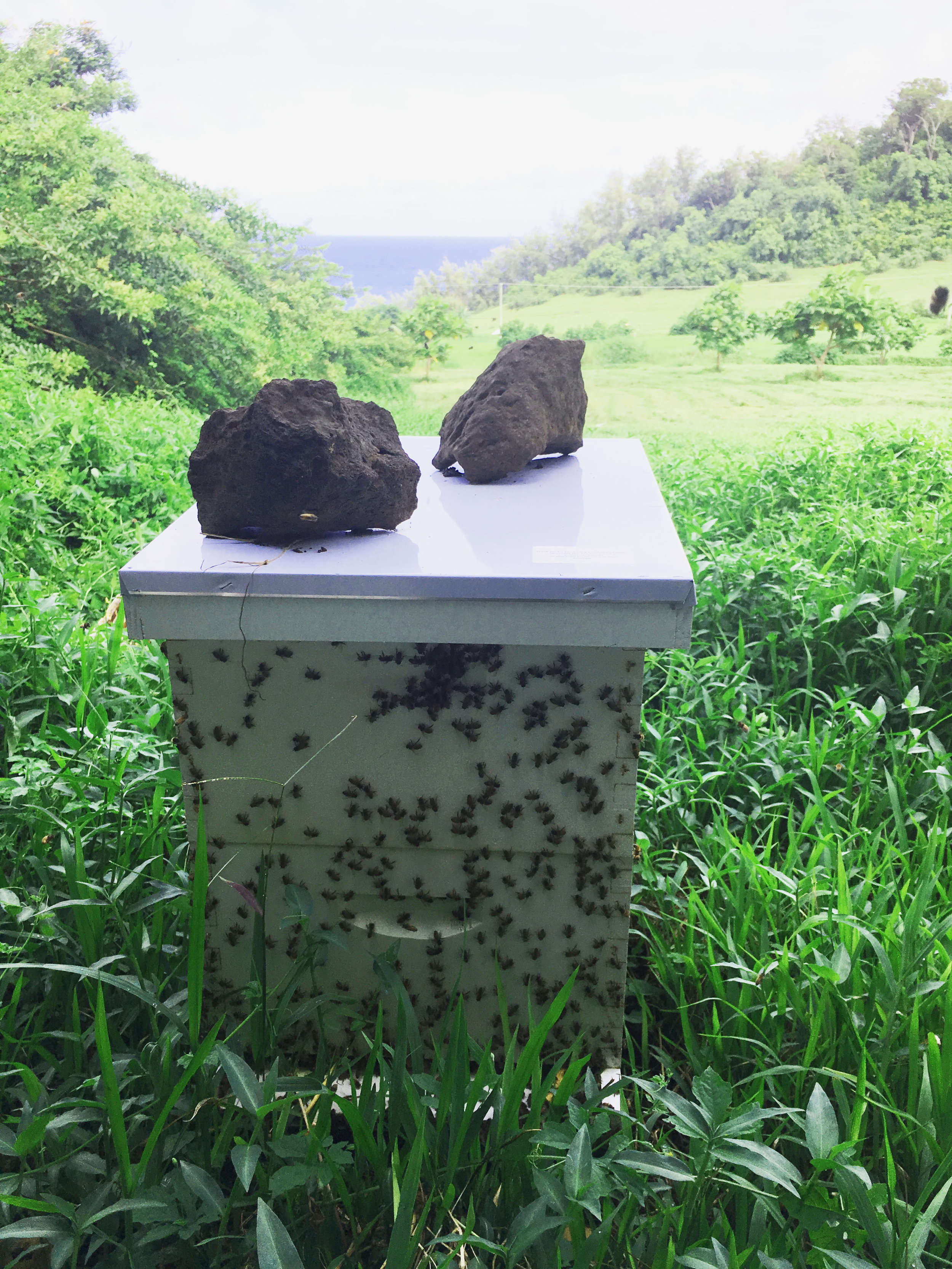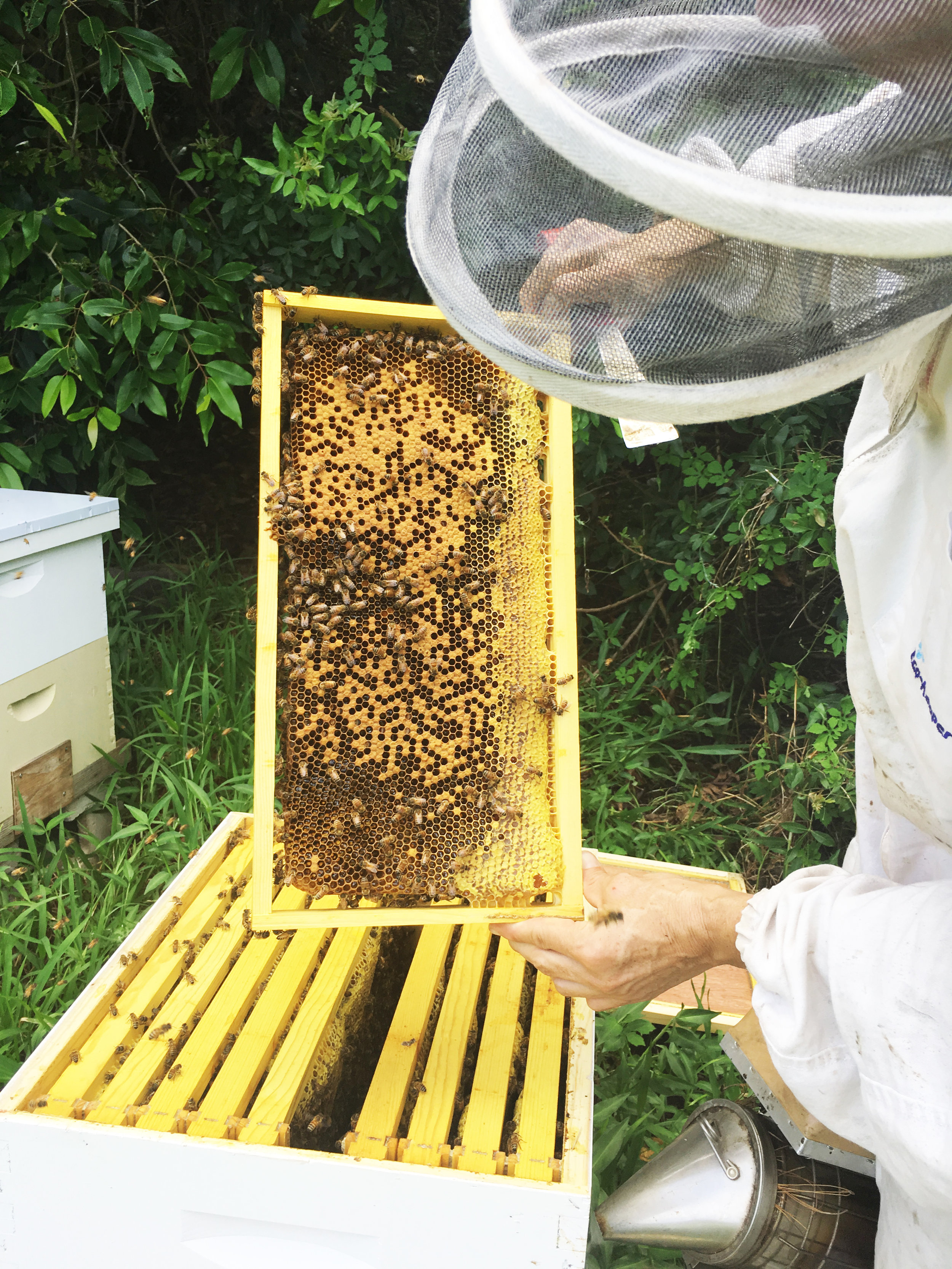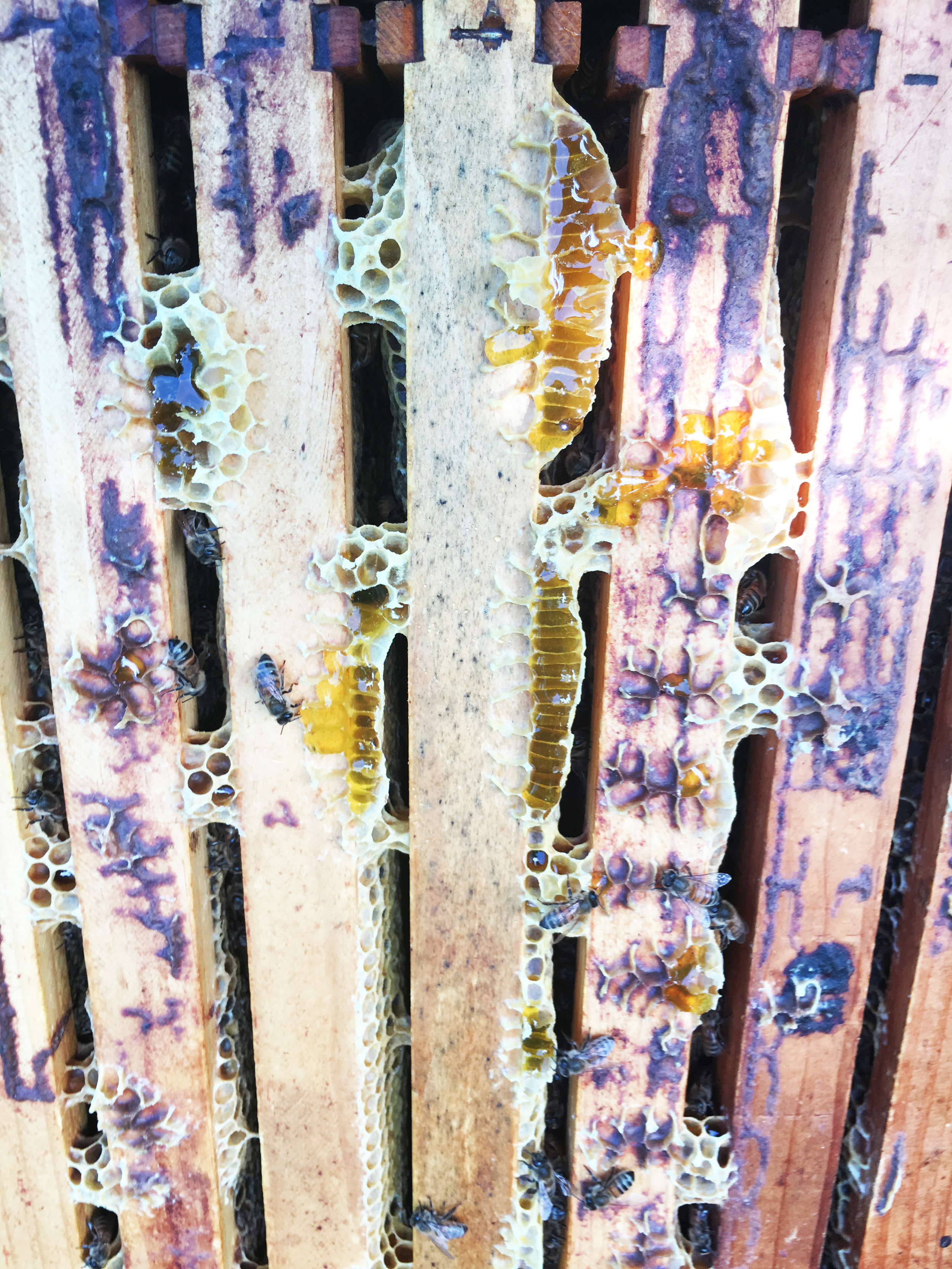By Meriwether Hardie
I pull out the tin smoker, stuff it with dried grasses, and then light it on fire. I watch as the grasses blacken and curl under the heat of the flames. I put the top of the smoker back on, and stare out past the ‘ulu trees and down to the ocean.
I am standing in one of the orchards of Hana Ranch, a working cattle ranch on 3,600 acres (also one of Bio-Logical Capital's diversified management projects) in Hana, Hawaii, where we recently set up three beehives in partnership with Hive Mind Maui. Today I am excited to open up the hives and see how they are doing in their new home.
As smoke begins to twist and spiral out of the top of the smoker, I lean down and put a few puffs of smoke into the entrance of the beehive. I crack the hive cover with my hive tool and direct a few puffs of smoke into the hive. I set the cover back down gently and wait a minute for the smoke to take effect.
The smoke does two things. First, it masks the pheromones that bees use to communicate with one another. This means that the colony will not be able to put out “alarm pheromones” and organize an attack against me, their intruder. Second, the smoke simulates a forest fire, activating a kind of bee “fire drill.” As part of the honeybee fire safety protocol, the bee colony all rush the hive and eat as much honey as possible. With full bellies, they will then be prepared to flee their burning home and start building new comb elsewhere.
I reach into the hive and pull out a frame that drips with fresh, golden, uncapped honey. Although I wear a beekeeper’s veil to protect my face and hair, my hands are bare. I move slowly and with gentle actions. The bees, although perhaps annoyed by my opening of their hive, are more focused on eating their honey then worrying about my presence.
During my childhood, my father was a commercial beekeeper. When I turned seven I was given my first beehive to care for by myself, and I spent all of my summers in high school working in the bee yard alongside my father. At a young age I learned that male bees (drones) do not have stingers and that you can therefore safely hold them gently in yours hands. And that bringing a jar full of drones into show and tell at school was always a huge hit. I also learned that each hive has 20,000-60,000 honeybees and one queen, that bees use the most complex symbolic language of any animal on earth, outside of the primate family (Karl von Frisch received the Nobel Prize in Medicine in 1973 for cracking the language code of honey bees—the waggle dance), and that a hive of bees must fly 55,000 miles to produce a pound of honey.
In my career today as I work to design and implement regenerative land use practices, I see that bees are essential to food production. Honeybees conduct almost 80% of all crop pollination, and commercial pollination is valued at around $19 billion annually. According to the Food and Agriculture Organization (FAO), bees increase food production quantity and quality. Studies show that if pollination is managed well on diverse farms, crop yields can increase by a significant median of 24%. That means plants put more of their resources into pollinated fruits, increasing quality and taste.
Bio-Logical Capital’s approach to agriculture relies heavily on integrated rotational management of animals and crops using principals from agroecology and other "beyond organic" practices. Bees are an often overlooked but essential part of this model. They are the connectors, the pollinators, and the silent workers on our farms. They are humble and hard working. I find them fascinating because although we understand much about how they communicate and function, there is still much more that we do not understand. Bees allow us to have fragrant flowers, colorful vegetables, and nutritious foods. Their pollination produces a brilliant and delicious by-product, honey, which is also an important value-add product for many farmers. And for me, the daughter of a beekeeper, it is important to encourage and honor their work on our projects, from an environmental, social, and economic perspective.
I peer closely into the frame and tilt it in the sunlight until I see signs of larvae and eggs, which is a clear sign that the hive has a healthy queen. I pull out several more frames and I do not see any signs of parasites or pests. This hive is filled with new honey, and the bees have clearly been busy visiting the ‘ulu trees, banana, orange, lime, and many other fruits and flowers in the orchard, meadows, and forests of Hana Ranch. I put the hive back together, take a moment to wipe to sweat off of my brow, and I move on to the next hive.





